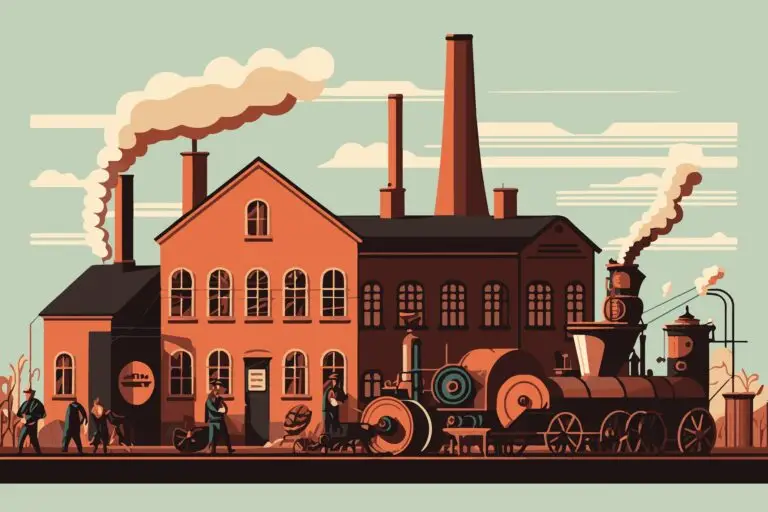Industrial Revolution (Europe)

Table of Contents
Europe's Industrial Revolution
The Industrial Revolution was a transformative period in European history that began in the late 18th century and continued into the 19th century. It marked a profound shift from agrarian and handicraft-based economies to industrialized, mechanized, and factory-driven production.
Technological innovations such as the steam engine, spinning jenny, and power loom revolutionized manufacturing processes, increasing productivity and the growth of industries like textiles, iron, and coal mining. The revolution also witnessed significant changes in transportation, with the development of steam-powered railways and ships facilitating the movement of goods and people.
Socially, the Industrial Revolution brought about urbanization as people migrated from rural areas to work in factories, resulting in the rise of industrial cities. The economic and social transformations had both positive and negative impacts, contributing to economic growth and the expansion of the middle class, but also giving rise to issues like poor working conditions, child labor, and social inequalities.
Industrial Revolution Events in Europe
The Industrial Revolution began in the late 18th century in Britain and later spread to other parts of Europe and the world, lasting roughly from the mid-18th century to the mid-19th century.
The transition from agrarian and craft-based economies to industrialized, machine-driven production marked the core of the Industrial Revolution.
Technological innovations played a pivotal role, with inventions such as the spinning jenny, steam engine, and power loom transforming the textile industry.
James Watt’s improvements to the steam engine in the 1760s greatly enhanced its efficiency, powering various industrial applications and facilitating the growth of factories.
The development of the factory system led to the concentration of production in large-scale, centralized facilities, revolutionizing the organization of work and increasing efficiency.
The coal and iron industries experienced significant growth during the Industrial Revolution, providing essential raw materials for manufacturing and infrastructure development.
The construction of railways in the early 19th century revolutionized transportation, facilitating the movement of goods, people, and raw materials over long distances.
Urbanization was a major consequence of the Industrial Revolution, as people moved from rural areas to cities, searching for employment in the new factories.
Child labor and harsh working conditions were prevalent during the early stages of the Industrial Revolution, prompting later efforts to improve labor laws and workers’ rights.
The Industrial Revolution had profound social and economic impacts, leading to new social classes, such as the industrial bourgeoisie and the industrial working class.
Related Links
Black Death
Communism
Great Depression
Marshall Plan